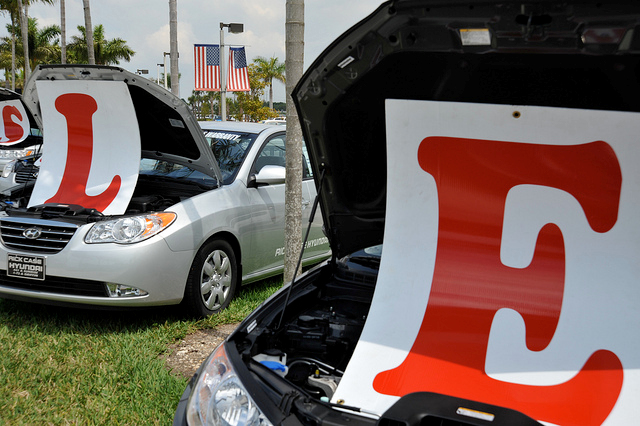Saving for a new car can be difficult, but it’s important to keep the benefits of saving in mind. According to Forbes, it’s easier to save if you keep the “future you” in mind while cutting corners now to save for the future. You’ll thank yourself after you’ve saved a chunk of money for the down payment for your new car because it will make your monthly payments much more affordable than if you had no down payment at all. Having a smaller monthly payment will ease your finances and help you save interest on the loan so it’s a win-win. The more you save the better off you’ll be. Even better is to drive a clunker until you can afford to pay for your entire car it avoids paying interest and actually has your bank paying you interest (as small as it may be) while you are saving.
Let’s take a moment to examine some tips that will help you save.
Set a Date

Plan Your Purchase
Once you’ve set a date when you’re going to buy your car, you’ll need to decide how much you want to spend overall on the car and how much you’ll want to put down to help decrease your monthly payments. If you commit to a $30,000 car because you want a new vehicle that will provide a bumper-to-bumper warranty, make sure you stick to that amount. Even better is buying a used car. See The Real Toll Depreciation Takes.
It’s tempting to go over your budget and spend more once you’re on the lot shopping around. Your best bet is to have a price range in mind when you come up with your savings plan and then decide on a specific year and model that fits your budget when the time to buy comes. don’t stray from the plan because it can cost you quite a bit more. Try going to sites like Kelley’s Blue Book to find out what cars are worth in your area and how reliable the cars you have in mind are because a car with inherent defects will cause more aggravation and cost more in the long run. You might even find that a subscription to Consumer Reports will save enough to justify its cost.
Set a Budget
Now that you know how much you want to save, you’ll need to stick to your commitments by setting a monthly saving and spending budget. This will help ensure that you save the money you need, while paying other bills and it’ll help you determine if your goals are obtainable. If you know you want to save $3,600 over the course of the next year to put a 10% down payment that equates to roughly $300 per month, which ironically is about what your car payment might be. If you allow yourself three years to save $3,600 that is $100 per month. But, if you can save $300 per month for 3 years you will have $300 x 12 months x 3 years= $10,800. At that point, you can either buy a $10,000 car and begin saving for your next car or buy a new car for say $30,000 and get yourself into $20,000 debt. Personally, I recommend avoiding the debt at all costs.
Get in the habit of setting aside money each month so you know you can afford it, before stepping foot on the sales lot.
Shop Online
Even though you’ve planned, saved and prepared, negotiate before you buy. Shopping around online can help you do that so you can compare prices to know where to get the best deal. These days car dealers like St. George Hyundai dealership encourage you to browse their online inventory, and then you can even schedule a test drive and investigate financing options online.
Bankrate says that you can negotiate the sales price and the interest rate of your next car loan before you even show up to test drive it. By shopping online and comparing prices you can avoid the part of the buying process that most people hate, i.e. the hardsell negotiating process that most dealers use to jack up the price.
Now that you’ve come up with a solid plan on how to save for your next car, there’s still one more thing that you can do to help offset the cost of your new family vehicle: you still need to get rid of your old car. There are a couple of ways you can do this. You can sell your car on the street to another private individual or you can trade it in at the dealership. Trading your car in might be your best option since you don’t have to find a buyer for your car.
See Also:
- Apps to Get the Best Price for Your Next Used Car
- Determine Your Car Buying Budget Before you Shop for a Car
- Selling Your Car? 4 Insightful Ways To Come Out Ahead
- Car Lot King: Use This Checklist Before Buying a Used Car
- Seven Tricks to Get Your Dream Car
- Buying a New Car – Can You Afford it?
- Saving Up for your First Car – Top Tips
- Buying a Used Car






My dad firmly believed in buying only used cars, but they can cause so many frustrations when they have engine problems. As a new mom, I am just ready to have a new car, even if it isn’t the most modern model. I appreciate how you lay out how to prepare financially for this purchase. I particularly like the advice of setting a date, as a kind of goal, because it gives you a perspective to maintain while you are saving money.